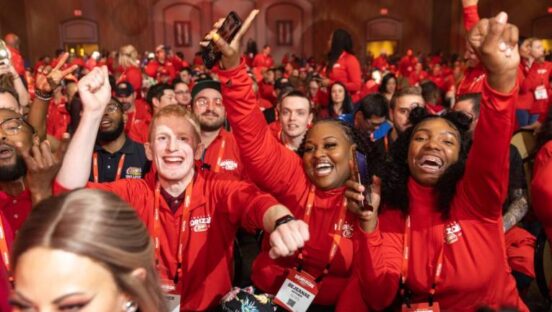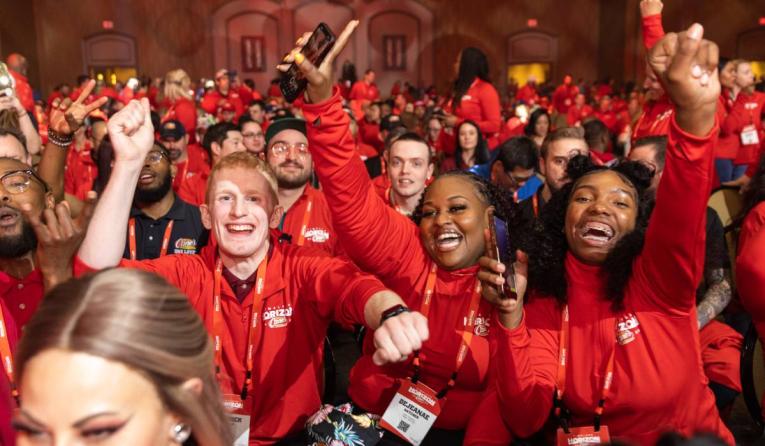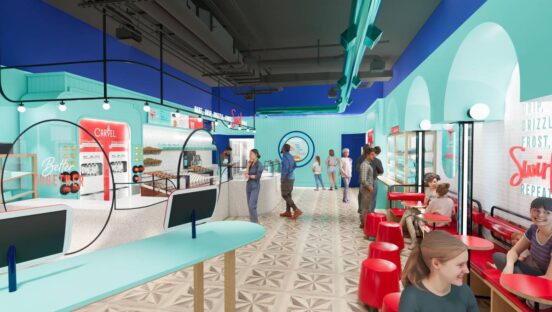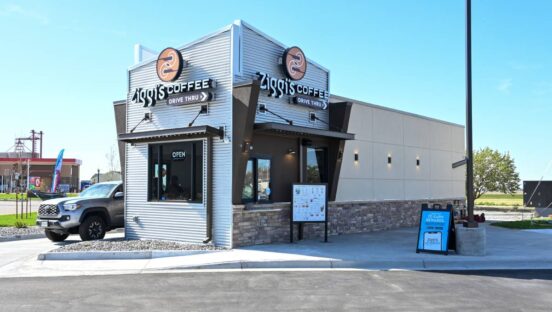Raising Cane’s is no stranger to the five-year plan. In early 2016, the chicken finger chain had just wrapped up a year at $500 million in sales, 290 locations, and a shade over $2 million in average-unit volumes. It was a bold crystal ball: Triple the size of the company in the next 60 months and reach $1.5 billion.
Raising Cane’s “stoutly” did so, co-CEO AJ Kumaran recalls. It finished 2021 at $1.711 billion and $3.85 million AUVs.
But forecasting soon spun sideways. Kumaran was in Cancun when he made the call to cancel Raising Cane’s next large-scale meeting, where it planned to celebrate those marks and announce the next five years. It was one of the first big chains to shutter a major conference due to COVID-19. So Raising Cane’s never did announce a five-year outline to follow the previous one.
In that pause, however, Kumaran and co-CEO and founder Todd Graves began to think broader. “Why bind ourselves to time?” Kumaran says. “Let’s be more aspirational. Let’s think about our business long, long, long term. We’re not going anywhere.”
That’s where Raising Cane’s idea of “Timeless Horizon” was devised. While this direction doesn’t segment progress in five-year blocks like the old model, it’s no less ambitious. Raising Cane’s closed 2021 with sales of $2.37 billion, AUVs of $4.893 million, and 567 locations. From 2019 to 2021, the brand added a net of 167 locations and watched units start making nearly $1.3 million more per store. That AUV, Kumaran says, is now $5.5 million. And the top-line is roughly $3.5 billion.
READ MORE: Raising Cane’s Founder Todd Graves is on a Journey to Inspire
The brand’s goal is take that number and triple it in the next few years. To Kumaran’s point, it’s a wide aim versus a dart. “I think it’ll be somewhere around seven years when we get there,” he says. “But it’s about more than time; it’s about the aspiration to get there.”
AUVs, Kumaran adds, project to reach $8 million systemwide by the end of that track. That would put Raising Cane’s in line with where Chick-fil-A’s freestanding drive-thru locations sit currently.
The picture materializes something like this: 1,500 locations and $10 billion in systemwide sales. “I’m well aware of the challenges but I’m excited about it. I think we can nail this,” Kumaran says.
Only seven restaurant brands in America eclipsed $10 billion in systemwide sales at the end of 2021 (McDonald’s: $45.96B; Starbucks: $24.3B; Chick-fil-A: $16.7B; Taco Bell: $12.6B; Wendy’s: $11.1B; Dunkin’: $10.4B; and Burger King: $10.03B).
But taking sight at rare air isn’t something Raising Cane’s shies from. And if anybody doubts the prospect, Kumaran and Graves are used to that, too.
This is the same brand whose original business plan earned Graves the lowest grade in his college class (the professor didn’t believe chicken fingers would sell in South Louisiana). Banks didn’t buy in, either. So Graves traveled to California to work as a boilermaker in an oil refinery before boarding an Alaskan salmon boat in 1995. He raised enough money to open a restaurant named after his yellow lab that nobody else seemed to believe in.
As those prior numbers illustrate, skeptics are long vanquished. Yet what will it take to go from a thriving, logic-defying enterprise to a top 10 restaurant brand in the nation?
“It’s about what truly matters,” Kumaran says. “What’s the purpose of the business? And, obviously, we are very competitive. We are goals oriented. There will be facts, figures, and numbers that we track throughout the journey. But, ultimately, we do this all for people during the whole evolution that we made.”
A few weeks ago, Raising Cane’s gathered 2,300 employees, leaders, and vendors, for the first time since that 2016 meeting. In addition to presenting a blueprint, the company unveiled a host of initiatives designed to “build a foundation for one of the most respected and high-performing restaurant businesses in the industry,” Kumaran says.
It began, as it often does for Raising Cane’s, with people. Before the gathering, the brand was coming off a two-year stretch where it added more than $200 million in wage increases and introduced a Restaurant Partner Program that could turn GMs into millionaires. The chain bought 50,000 lottery tickets in case the Mega Millions jackpot hit, which it then planned to distribute to workers. Raising Cane’s didn’t furlough or lay off a single worker at the onset of COVID. It instead distributed $2 million in bonuses to account for hours some employees relinquished so everyone could stay employed. The brand sent 10 GMs on all-expense paid trips to Hawaii; bolstered educational benefits, and bumped tuition reimbursement to $5,250 per year.
It was one of only three restaurant brands named to Forbes’ “Best Employers for New Grads” and one of only four hospitality companies to be on Glassdoor’s “100 Best Places to Work in the U.S,” as well as a QSR Best Brand to Work For.
Graves, named a Top CEO by Glassdoor in 2019, has often credited Raising Cane’s culture to his own unlikely story and perspective to pay it forward.
At this year’s meeting, here’s a snapshot of what was shared:
- Weekly pay checks for all employees
- All hourly managers moving to $18 per hour minimum pay (average $19.50/or roughly a $9 million investment)
- Opportunity for hourly workers to make $2 more per hour within the first 12 months of employment
- In addition to above, providing $2 training premiums for all crew who lead training for new crew members
- Also, the opportunity to earn an additional $1 through advanced crew certifications
- Premium pay across the system for times where the brand needs employees the most: $1 for any time worked past 10 p.m., and $1 for any major event
- A new certified traveling trainer program is designed to send tenured, experience crew at all levels (crew to restaurant leader) to new areas to support company growth
- The ability for employees to live in a new city rent free for 3–6 months, in addition to other pay additions
- The first group of this program was selected and will be going to New York City—10 restaurant leaders from across the country are going to live in the Big Apple to support a market launch
- Increasing monthly incentive for all salaried leaders by about 25 percent
- Creating two new layers in Raising Cane’s management structure: instantly adding more than 300 management job opportunities for crew and future crew
- With the Restaurant Partner Program, Raising Cane’s announced an initiative where it will pay $10,000 toward closing costs for restaurant leaders who purchase their first-time home
- And lastly, in the past 26 years, Raising Cane’s has given back $100 million to communities. Kumuran says the brand will now do the same, but in just six or seven years

“We are like that championship team who wants to win every game. We don’t want to do it once and talk about it seven years later. We want to do it every year, every month, every second, every day. We strive for perfection,” Raising Cane’s co-CEO AJ Kumaran says.
Pulled back for a moment, all of these goals and directives support what’s an uncomplicated approach for Raising Cane’s. “We want to be straightforward,” Kumaran says. “You need people. You need a huge development platform to grow the business, which means you have to be able to grow internal talent while also bringing great talent from outside and having them join in the journey, too.”
The reason the brand poured hundreds of millions into wages and added new levels of management—one more at the hourly level and an additional one at salary—goes beyond doing right by employees and creating a culture-centric base. While that’s the DNA of Raising Cane’s, it’s also just good business, Kumaran says. Raising Cane’s wants to support the volumes it began to dial up when COVID raced guests to the drive-thru—and to anchor that future $8 million number.
A good example is the traveling trainer program. “It sounds cute,” Kumaran says, “but it’s not. It’s very serious.”
Raising Cane’s opened nine new markets last year and expects 14 fresh ones over the next 12 months. The chain has already opened 35 restaurants this year alone. It’s going to need help supporting and bringing not only jobs to company standard, but also culture to different trade areas across the country, Kumaran says. The program takes “the best of the best,” interviews them, and then puts them through a detailed development program so they’re good at training others. Then, Raising Cane’s provides support to relocate them temporarily to that market (like the NYC team). Those 10 senior leaders are going to embed themselves in the Big Apple to develop local talent. “So by the time people are ready to walk away, we have really strong, local talent who is ready to run as well,” Kumaran says.
Undoubtedly, it’s a sizable investment. But this is how Raising Cane’s has marched to $3.5 billion. It walks a deliberate path that spends money where it matters most to make it later. Central to the NYC plan is an 8,000-square-foot flagship in Times Square. Kumaran says Raising Cane’s could speed the timeline and “open that next month.” Instead, it’s keeping the door closed for the next two months just to train and work out kinks, from crew member capacity to ordering and supply chain. “We’re not going to do trial runs on our customers,” he says. “We’re going to serve them right.”
Again, it’s more than a morale declaration. “From a business perspective, results are staggering,” Kumaran says. “Results are through the roof. So it’s not only the right thing to do, it’s also the smart thing to do. We make a lot of money doing it.”
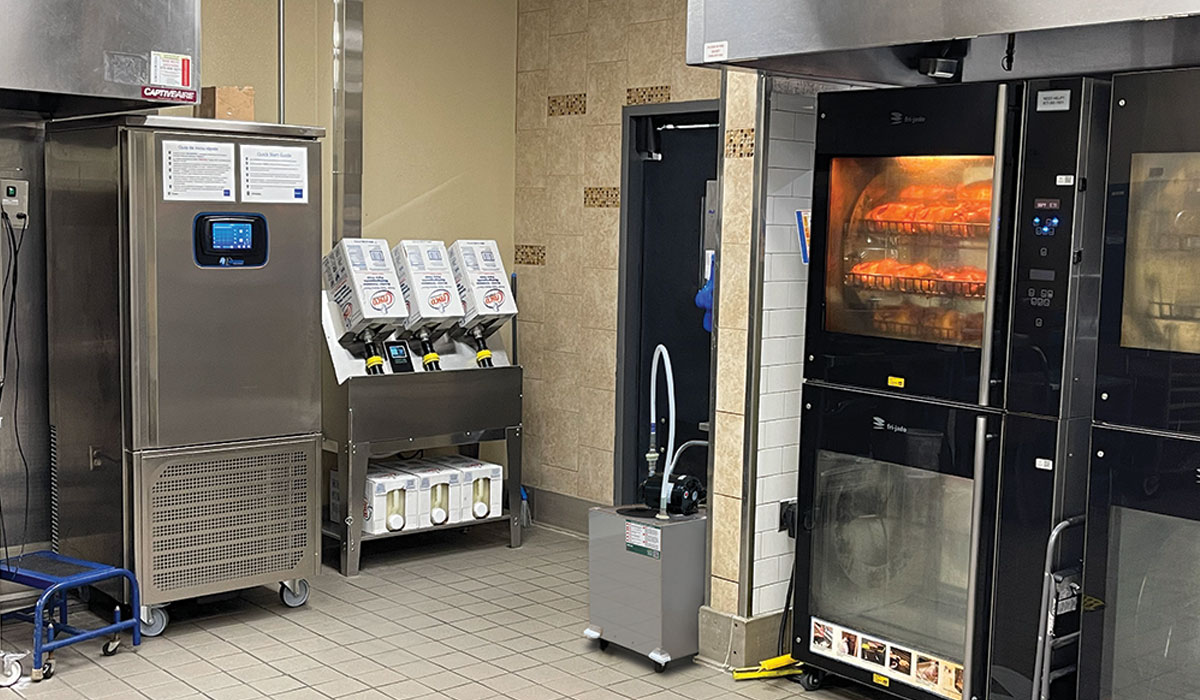
Competitive pay and a great atmosphere to work in have become table stakes for a changing generation of restaurant employees, he adds. It’s the layers where Raising Cane’s is building a movement. The decision to tack on $2 of pay, per hour, for employees who train peers is the age-old “buddy system” evolved for the future. Workers have to be certified to take on that task.
Raising Cane’s business is deliberately dressed down. It serves chicken fingers and chicken fingers only, Kumaran says. While that’s an operator’s dream on the make-line, it also means Raising Cane’s has to be damn good at it. The company conducts what it calls, “zone training,” where employees learn in one zone, and when they master it, they move to another. Along the way, they become “specialists” in one element of the business able to share learnings, and then cross-train themselves over time.
It accomplishes two things, Kumaran explains: One, as noted, employees become really good at one task, like making chicken fingers. So restaurant leaders have better trained staff to help them with everything they do. But on the flipside, because these employees are trained, they also get to earn more dollars and are incentivized to keep growing, helping with retention. “People is the purpose of our business,” Kumaran says. “We want to bring in great talent to join in the journey with us. And we are like that championship team who wants to win every game. We don’t want to do it once and talk about it seven years later. We want to do it every year, every month, every second, every day. We strive for perfection.”
This isn’t just lip service. Raising Cane’s has an entire department dedicated to showing appreciation to crewmembers called “Cane’s Love.” Leadership writes roughly 4,000 thank you cards per week to employees. During its final systemwide call of 2021, the chain gave away more than $100,000, including dozens of workers receiving $1,000 bonuses, five earning $2,500 for tuition costs, and two getting $5,000 to help pay bills.
The Restaurant Partner Program was unveiled in 2020. It’s designed to give employees more than $1 million in net worth within 10 years. To qualify, they must be a GM for at least a year and show strong results. Once selected, they go through a 12-month probationary period before graduating into the official program. As of last August, there were 150 Restaurant Partners, including 40 that joined that year.
In 2022, Raising Cane’s handed out incentive payments of $5.2 million across 45 people. So far, it’s given $15 million in that program through long-term incentives only, not including salaries and bonuses.
“Our whole thinking is that focus on crew well-being in a very holistic perspective. Great education and training. Great development. Great support structure. And great support for them to run their personal lives, such as concierge service when it comes to making a medical appointment and things like that,” Kumaran says. “Provide everything so that part of their lives is easy, because this business is very hard, it’s not easy. It’s far from easy. You’re serving people constantly and we want to serve our people.”

